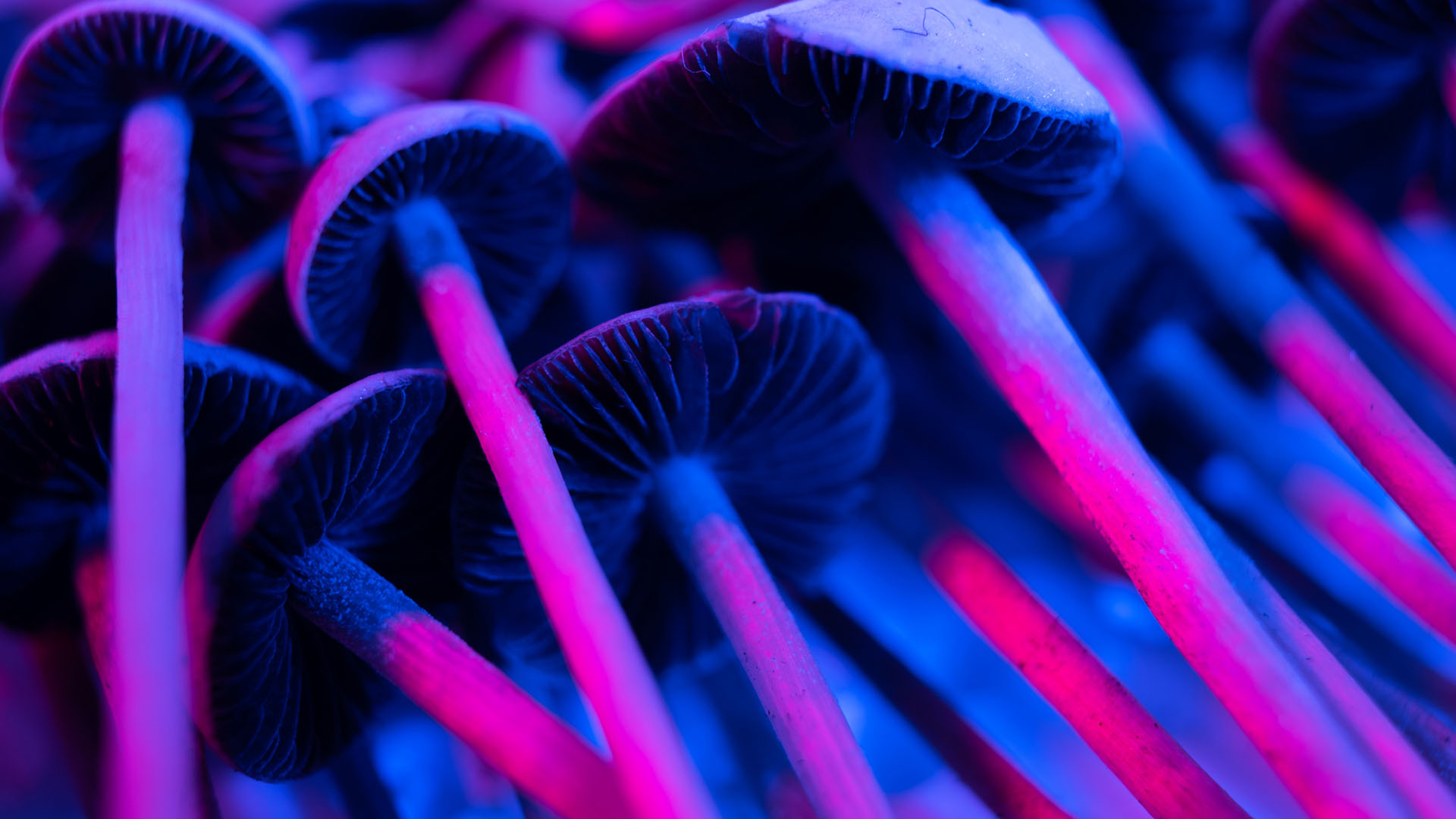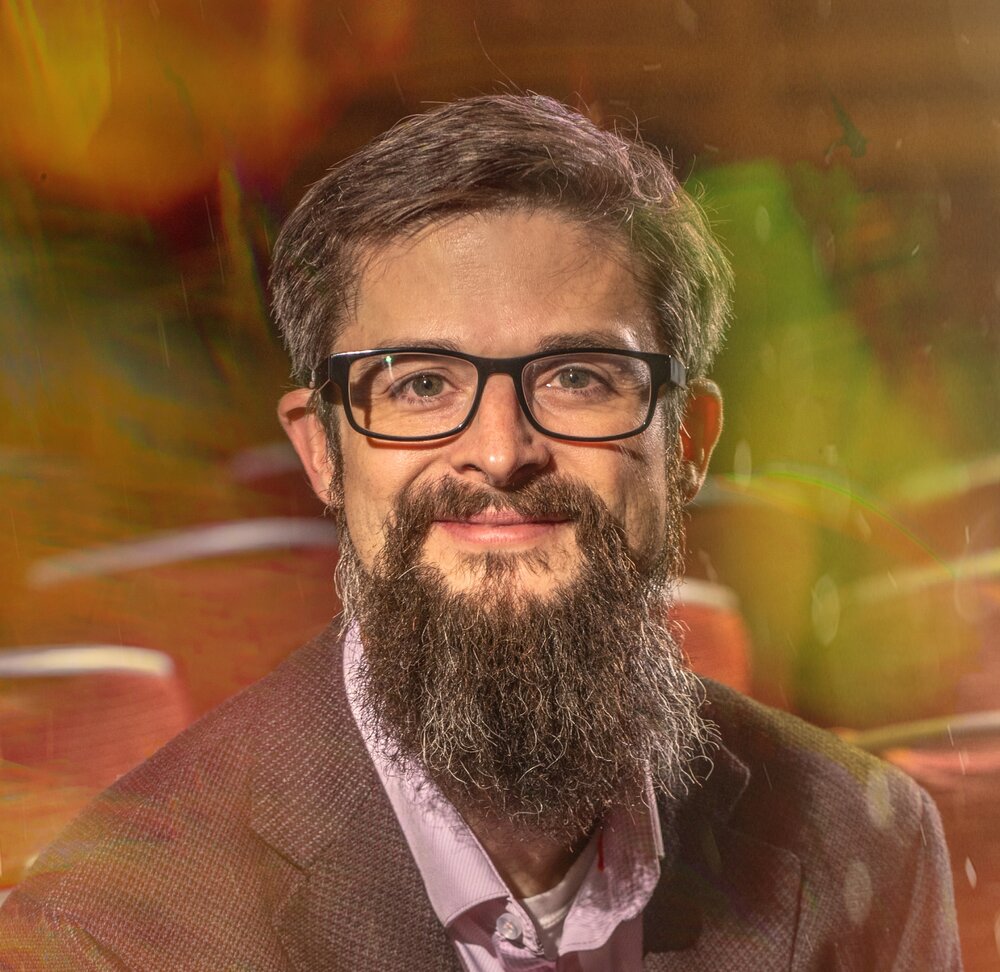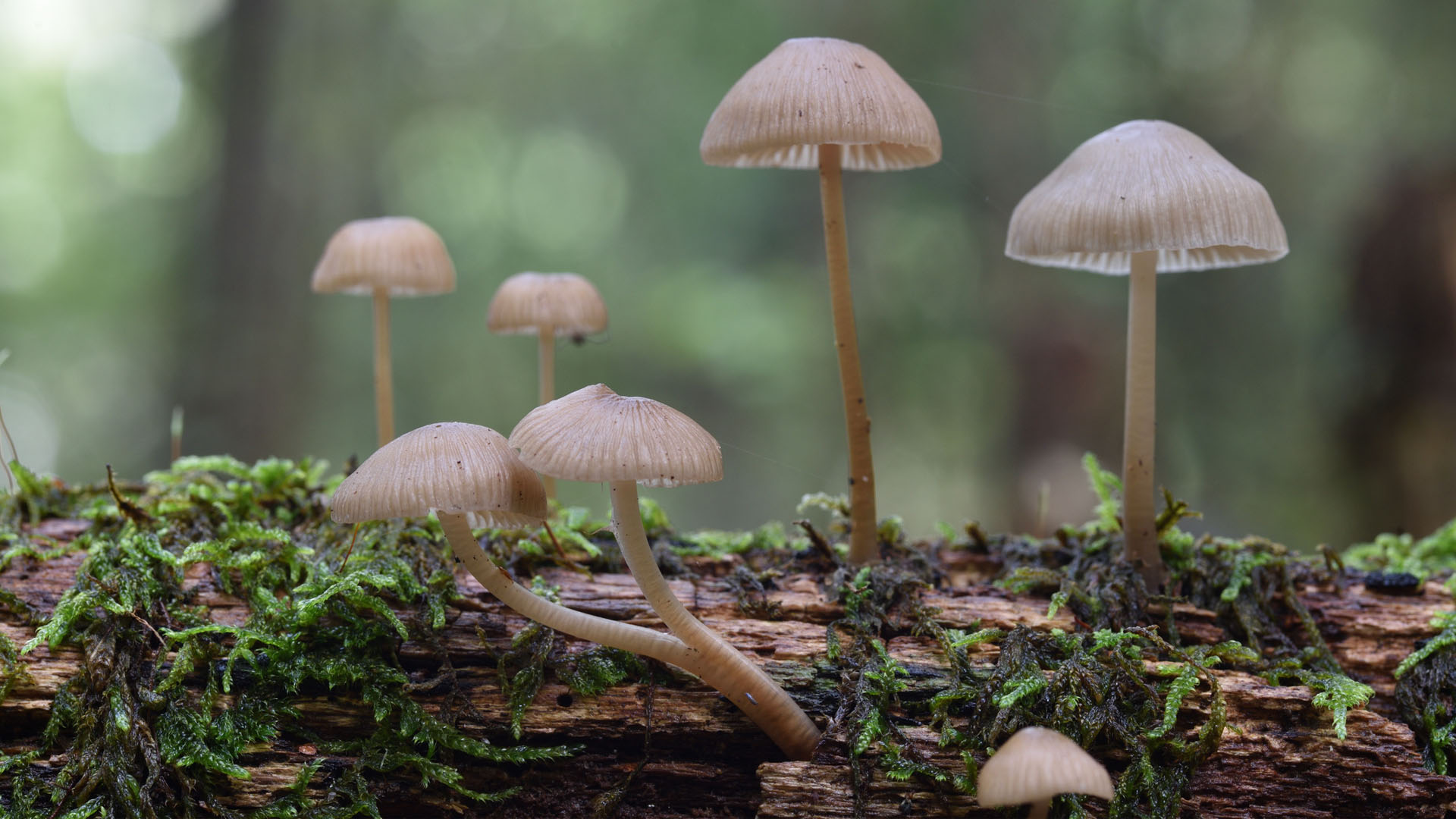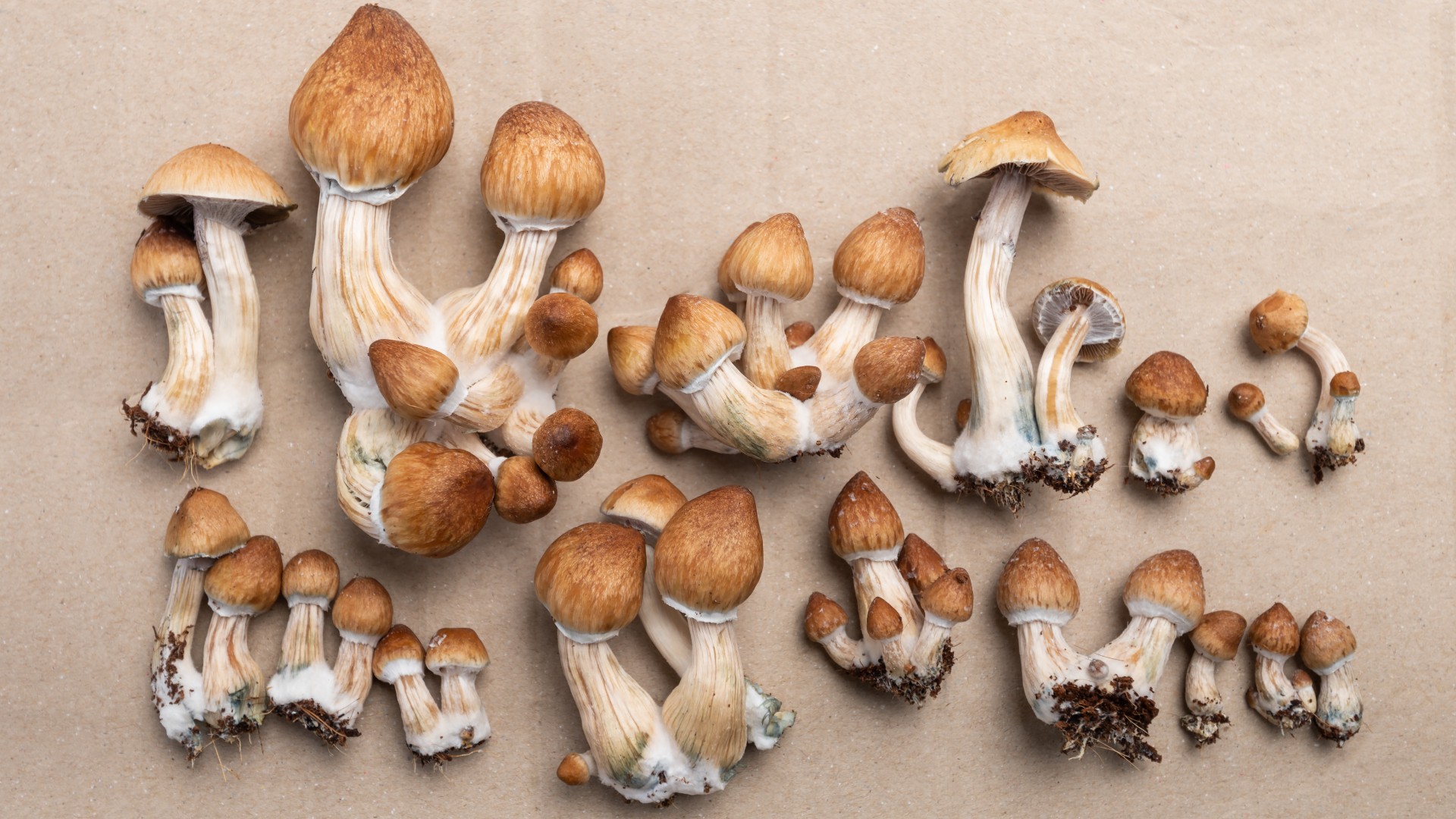Psilocybin: Facts about the main ingredient in psychedelic 'magic' mushrooms
Psilocybin, like other psychedelics, is illegal in the United States, but controlled doses may have therapeutic effects.

Psilocybin is the main psychoactive ingredient in hallucinogenic mushrooms, also called "magic mushrooms" or "shrooms." There are over 100 species of mushrooms that contain psilocybin.
Although people have been consuming magic mushrooms for thousands of years, the compound wasn't isolated until 1957 and it was produced synthetically a year later. Since 1970, psilocybin and psilocin (a closely related compound) have been listed by the U.S. Drug Enforcement Association (DEA) as Schedule I substances — the federal government's most restrictive category.
Despite these restrictions, recent clinical trials have found psilocybin to be a promising therapy for treatment-resistant anxiety and depression. Because of this, the U.S. Food and Drug Administration (FDA) has designated psilocybin as a "breakthrough therapy"— an action meant to accelerate the drug development and review process.
In February 2023, Australia’s Therapeutic Goods Administration announced that psychiatrists would be able to prescribe psilocybin for treatment-resistant depression. However, the drug will only be allowed to be used in a very limited way and remains otherwise prohibited in the country.
Where does psilocybin come from?
There are over 100 species of psilocybin-containing mushrooms with varying potencies, said Matthew Johnson, an associate professor of psychiatry and behavioral sciences at Johns Hopkins School of Medicine in Baltimore who studies psychedelic drugs such as psilocybin.
Psilocybin mushrooms have long, slender stems topped by caps with dark brown edges, according to the DEA. In the U.S., magic mushrooms are found in the Southeast and Pacific Northwest often growing in pastures on cow dung, Johnson told Live Science. They also grow in Mexico, Central and South America. The most potent species in the world is considered Psilocybe azurescens, which is found mainly in the U.S. Pacific Northwest.

Matthew Johnson is an associate professor of psychiatry and behavioral sciences. One of the world’s most published scientists on the human effects of psychedelics, he has conducted seminal research in the behavioral economics of drug use, addiction and risk behavior. Johnson earned his PhD in experimental psychology at the University of Vermont in 2004 and has been working with psychedelics ever since. He is principal investigator on funded studies investigating psilocybin in the treatment of opioid dependence and PTSD.
In the early 1950s, an American banker and mushroom enthusiast named R. Gordon Wasson came across an indigenous tribe using psychoactive mushrooms when he was on vacation in Mexico, according to Drug Policy Alliance. Wasson sent samples of the mushrooms to Albert Hoffmann, a Swiss chemist known for discovering LSD. Hoffmann isolated psilocybin from the mushroom Psilocybe mexicana in 1957, and he developed a way to produce a synthetic version of the psychedelic compound a year later.
Get the world’s most fascinating discoveries delivered straight to your inbox.
Since 1970, psilocybin and psilocin have been listed by the DEA as Schedule I substances, the federal government's most restrictive category. Drugs in this category are believed to have a "high potential for abuse" as well as "no accepted medical use," according to the DEA.
What does psilocybin do to the brain?
Psilocybin along with other drugs, such as lysergic acid diethylamide (LSD) and mescaline, are considered "classic psychedelics" because they can induce changes in mood, thought and perception by mimicking neurotransmitters in your brain.
Once it enters the body, psilocybin is broken down into psilocin, a substance that acts like the neurotransmitter serotonin, which regulates mood. Psilocybin is known to activate a specific type of serotonin receptor in the brain that triggers its psychedelic effects, Johnson said.
Its hallucinatory effects can cause a person to see images, hear sounds and feel sensations that seem real but aren't, according to Partnership for Drug-Free Kids. Someone on psilocybin may experience synesthesia, or the mixture of two senses, such as feeling like they can smell colors.
Related: 'Trippy' bacteria engineered to brew 'magic mushroom' hallucinogen

Besides sensory enhancement and visual hallucinations, participants in psilocybin-assisted therapy sessions have described the drug's effects as a life-changing experience where they gain deep insight that shifts the way they think about themselves.
A mystical type of experience has also been linked with the use of psilocybin, Johnson said. People have described feeling at one with humanity, feeling a sense of unity, and feeling a sense of self dissolve after consuming the psychedelic compound, he explained.
Studies have shown that after taking psilocybin, there is a sharp increase in communication between areas of the brain that normally don't talk to each other, which may partly explain the new insights people experience. There's also a quieting of deeply entrenched thought patterns that contribute to addictions, anxiety and depression, Johnson said.
Is psilocybin legal?
The FDA has granted some scientists permission to use psilocybin in research but the recreational use of psilocybin is illegal in the U.S. However, its illicit use has been decriminalized in two cities (Denver and Oakland, California) and other cities are working on similar measures, Johnson said.
In February 2023, Australia was the first country to legalize the use of psilocybin for medical use. The Therapeutic Goods Administration announced that psychiatrists would be able to prescribe the substance from July 2023 for depression. However, possession and recreational use of the drug remains criminalized.
People have been ingesting psilocybin-containing mushrooms for thousands of years as part of religious ceremonies or for healing purposes.
Magic mushrooms can be made into a tea, eaten raw or dried, ground into a powder and put in capsules, or coated in chocolate, to mask their bitter flavor and disguise them as candy, Johnson said. The hallucinogenic effects may begin within 20 to 40 minutes of use and last about 3 to 6 hours, according to the U.S. Department of Justice.

Studies on the possible medical benefits of psilocybin and other psychedelics began in the 1950s and '60s, immediately after Hoffmann created a way to produce the chemical synthetically.
Although findings showed promise for treating anxiety, depression and addiction, research in the U.S. came to a halt in 1970, when President Richard Nixon signed the Controlled Substances Act. This law was viewed as a political response to a growing fear of psychedelic drug use in young people and the spread of the counterculture movement.
Three decades later, Roland Griffiths, a psychopharmacologist at Johns Hopkins, won FDA approval to study psilocybin, ushering in a new era of psychedelics research with more rigorous scientific standards than earlier studies.
When used in current research sessions, participants take a pill containing a high dose of synthetic psilocybin with professionals monitoring them and providing psychological support, Johnson said. They typically receive counseling before and after the psychedelic experience.
Psilocybin therapy research
Psilocybin has shown promise for treating a variety of difficult-to-treat health conditions.
For example, the results are extremely positive for the use of psilocybin in the treatment of smoking cessation and depression, Johnson said. Clinical trials have reported that just one to three doses of psilocybin given in conjunction with cognitive behavioral therapy have helped patients quit their smoking habit, he said. Afterward, people feel more confident in their ability to change behavior and manage their addictions.
Results are also promising for the use of psilocybin in reducing cancer-related anxiety and treatment-resistant depression — two areas where there is a huge need for better treatment options, Johnson said.
Results from the largest-ever trial of the therapy were published in 2022, with researchers preparing to launch an even larger trial, called Phase 3, which will supply the needed data for FDA approval.
Psilocybin along with supportive therapy appears to help people come to grips with problems and learn from these experiences, Johnson said. The treatment may induce insights and novel perspectives that promote mental flexibility and may cause lasting behavior changes six months to a year later.
Small studies of psilocybin have also suggested benefits as a treatment for alcohol addiction and obsessive-compulsive disorder.
Potential risks of psilocybin
The most common negative side effect of psilocybin is the potential for a "bad trip," Johnson said. High doses of psilocybin can cause overwhelming feelings of anxiety, fear and confusion that can lead to dangerous behavior if not used under medical supervision.
Psychedelics are very intoxicating substances, and their side effects can be challenging to manage even in the relatively safe framework of a research setting, Johnson said. Researchers reduce these risks by prohibiting people with a history of psychosis from participating in psilocybin studies. Psilocybin can also moderately increase blood pressure, which is why people with heart problems are excluded from studies, he added. Other possible side effects of psilocybin use include nausea, vomiting, headaches and stomach cramps.
For recreational users, misidentification of mushroom species is one of the biggest concerns. Some poisonous varieties of mushrooms in the wild bear a strong resemblance to psilocybin species, according to ProjectKnow. Inexperienced mushroom hunters might not recognize the difference, and could accidentally ingest a poisonous mushroom, which could lead to liver failure or death.
Historical uses of psilocybin
Central Americans were using psilocybin mushrooms before Europeans landed on the New World's shores, according to Science Direct; the fantastical fungi grow well in subtropical and tropical environments. But how far back were humans tripping on magic mushrooms?
It's not an easy question to answer, but a 1992 paper in the short-lived journal, "Integration: Journal of Mind-Moving Plants and Culture," argued that rock art in the Sahara dating back 9,000 years depicts hallucinogenic mushrooms. The art in question shows masked figures holding mushroom-like objects.
Other drawings show mushrooms positioned behind anthropomorphic figures — possibly a nod to the fact that mushrooms grow in dung. The mushroom figures have also been interpreted as flowers, arrows or other plant matter, however, so it remains an open question whether the people who lived in the ancient Sahara used 'shrooms.
According to Sierra College anthropologist John Rush, magic mushrooms explain why kids wait for a flying elf to bring them presents on Dec. 25.
Rush said that Siberian shamans used to bring gifts of hallucinogenic mushrooms to households each winter. Reindeer were the "spirit animals" of these shaman, and ingesting mushrooms might just convince a hallucinating tribe member that those animals could fly, according to Psychedelic Spotlight.
Plus Santa's red-and-white suit looks suspiciously like the colors of the mushroom species Amanita muscaria, which grows under evergreen trees. However, this species is toxic to people. Feeling like you've just taken a bad trip? Not to worry. Not all anthropologists are sold on the hallucinogen-Christmas connection. But still, as Carl Ruck, a classicist at Boston University, told Live Science: "At first glance, one thinks it's ridiculous, but it's not."
Additional resources
- Find out how very tiny doses of psilocybin could improve mood, focus and creativity, from The Conversation.
- Find the results of a Johns Hopkins survey of people's 'bad trip' experiences on magic mushrooms.
- Learn more about psilocybin mushroom research from the Beckley Foundation.
This article is for informational purposes only and is not meant to provide medical advice.
Cari Nierenberg has been writing about health and wellness topics for online news outlets and print publications for more than two decades. Her work has been published by Live Science, The Washington Post, WebMD, Scientific American, among others. She has a Bachelor of Science degree in nutrition from Cornell University and a Master of Science degree in Nutrition and Communication from Boston University.
